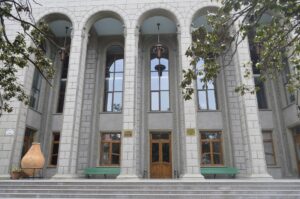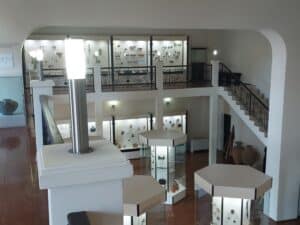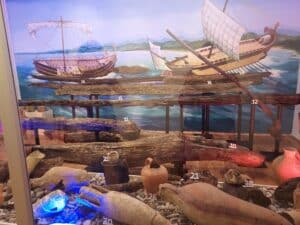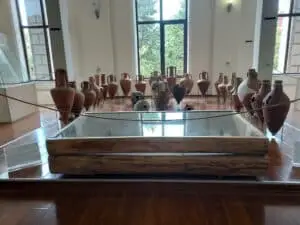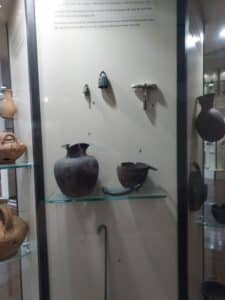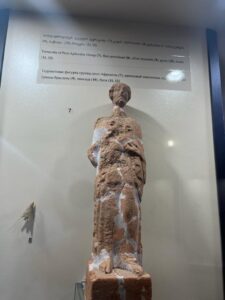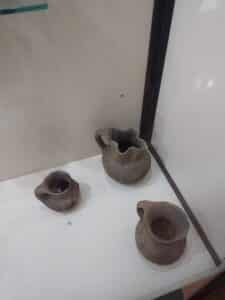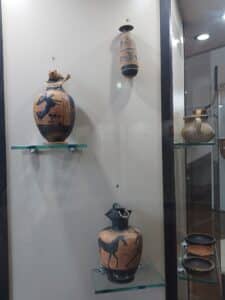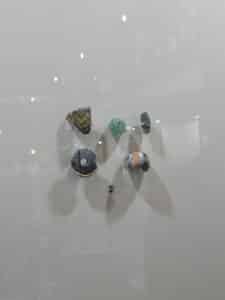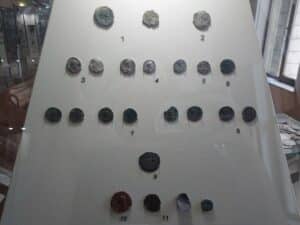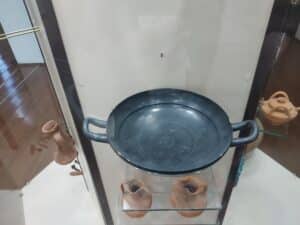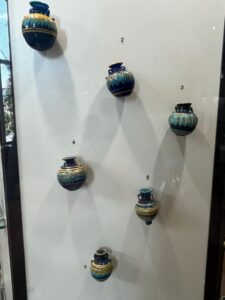The Batumi Archeological Museum is centrally located on the main highway that runs through the city. It is a two-story stone building that houses a plethora of artifacts from Georgian excavation sites, bringing to life the story of the local people and their connections to European culture.
History and Founding of the Batumi Archeological Museum
The Batumi Archeological Museum has an interesting history. For about a hundred years, archeological excavations have been held in southwest Georgia, where Adjara is located. The building to hold the findings from these excavations, and which now houses the museum, was completed in 1957. The building is a quietly beautiful structure – compact, with soaring minimalist arches, and constructed of stone plastered to resemble marble. However, despite the building’s completion, the museum itself was not founded and opened to the public until 1994.
The reason for this nearly half-century gap are not entirely clear. However, it appears that excavations intensified in the 1950s, which may have necessitated the new building to house the finds. Most of the artifacts on display are those found during or since the 1950s.
Starting in 1998, the museum began a joint expedition with Ashmolean Museum of Oxford University at Pichvnari on Adjara’s Black Sea coast at the confluence of the Choloki and Ochkhamuri Rivers. The expedition has yielded yearly new finds to add to the museum’s collections.
In 2014, the museum building was renovated, giving it its current, modern look inside. The building is also now equipped with a restoration lab and new security systems.
In 2018, the museum was folded into a new museums union called LEPL Ajara Museum, created by the regional government in that year. The union allows museums to work together in promoting tourism, education, professional development, scientific research, and the popularity of national culture.
The Government of the Autonomous Republic of Adjara funds the museum, while the website is funded by the Open Society Georgia Foundation.
Visiting the Batumi Archeological Museum
(Summer, 2022)
The Batumi Archeological Museum’s interior is modern and minimalist, contrasting with the many ancient and prehistoric artifacts presented.
After walking up the front steps and into the museum foyer, a receptionist will greet you. Admission is six lari (~$2 USD) per adult. There are also lockable drawers available to house bags and other belongings you do not wish to carry while walking through the exhibits. The exhibit begins upstairs, with every display case numbered and arrows on the floors and walls to provide direction. The first display case is on the left side of the mezzanine, and begins at the stone age. Each case has Georgian, English, and Russian text, as well as QR codes for the museum’s online index in Georgian and English. The online index contains the same information as the cases. The first case showcases stone knives and axes from the Paleolithic Era. There are also two skulls and mandibles in this case that date back to between 1,800,000 and 1,700,000 BCE. The following cases contain several artifacts from the Neolithic and Bronze Ages. From the first wall of cases, the museum establishes the vast historical and cultural presence of Georgia.
By the time you reach the other side of the mezzanine, you have begun to see tool making evolve to a more complex art and the increasing prominence of more delicate crafts such as jewelry and pottery.
The last case on the mezzanine includes an introduction to Greeks and Romans, who interacted with the inhabitants of Georgia frequently. The main floor then emphasizes cultural relations and trade with Greeks, Romans, Byzantines, and Arabs. Over time, the artifacts become still more intricate and show Greek influences. Many of these artifacts were discovered in cemeteries and necropolises, providing insight on cultural traditions and what was of materialistic importance. In the center of the room is a display with the re-creation of a young woman’s grave that was excavated near present-day Kobuleti. The display also contains a collection of amphoras excavated from various places in Ajara. The cases after this display showcase artifacts from 5th to 1st centuries BC. Glass and ceramic art becomes more prominent, with an array of colorful necklaces and decorative vases. Display Cabinet #43 is dedicated to the Middle Ages and Christianity in Ajara. The case includes crosses and intricate stone carvings of the sort that often adorned churches and monasteries in Christian Georgia.
Once you have seen all of the cases in the main exhibition hall, you can walk back downstairs and visit the Underwater Archeology and Gold Treasures exhibits. The Underwater Archeology exhibit includes a small aquarium and a display. You can view wood from ships as well as amphoras and vases that have all been excavated off of the Ajarian coast. All of the gold artifacts displayed by the museum can be found in the Gold Treasures exhibit. Jewelry, coins, bowls, and breastplates can be viewed in this room.
The Batumi Archeological Museum cements Ajara as a culturally and historically significant place since at least the Stone Age as well as helps cement Georgia’s place in European history through its focus on Greek and Roman influences. The careful arrangement and presentation also brings to life the evolution of human ingenuity and skill. It is a fun and educational experience for visitors of all ages.
For those who can’t make it there, in person a Virtual Tour is available with some English.
You Might Also Like
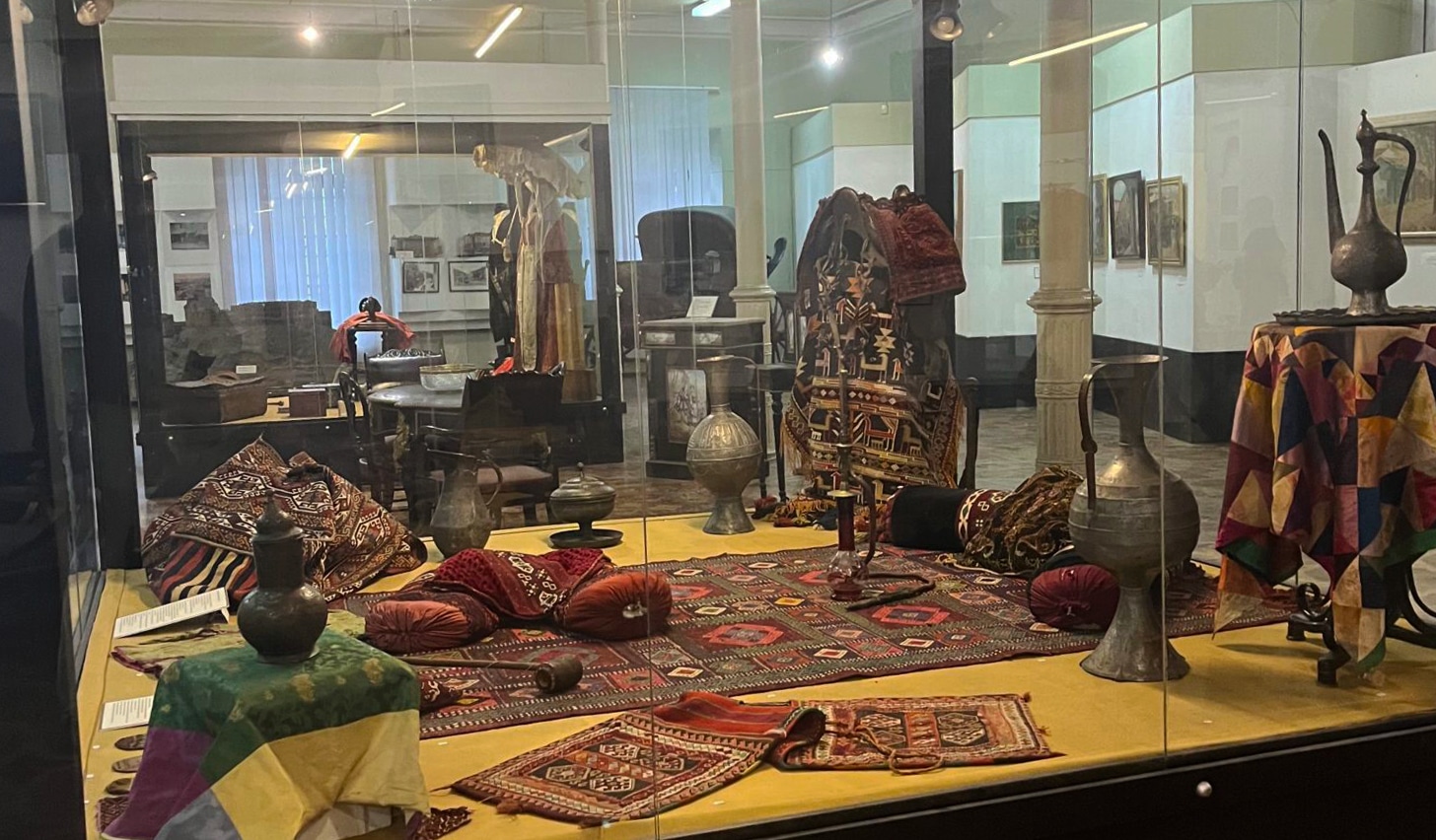
The Tbilisi History Museum
The Tbilisi History Museum is a quick peak into the city’s 19th century past that helps solidify its importance as a commercial hub at the cultural crossroads of the Persian, Ottoman, and Russian empires. Housed in a historic building with other worthwhile museums and telling its story through models, life-size dioramas, historic photographs, and other […]
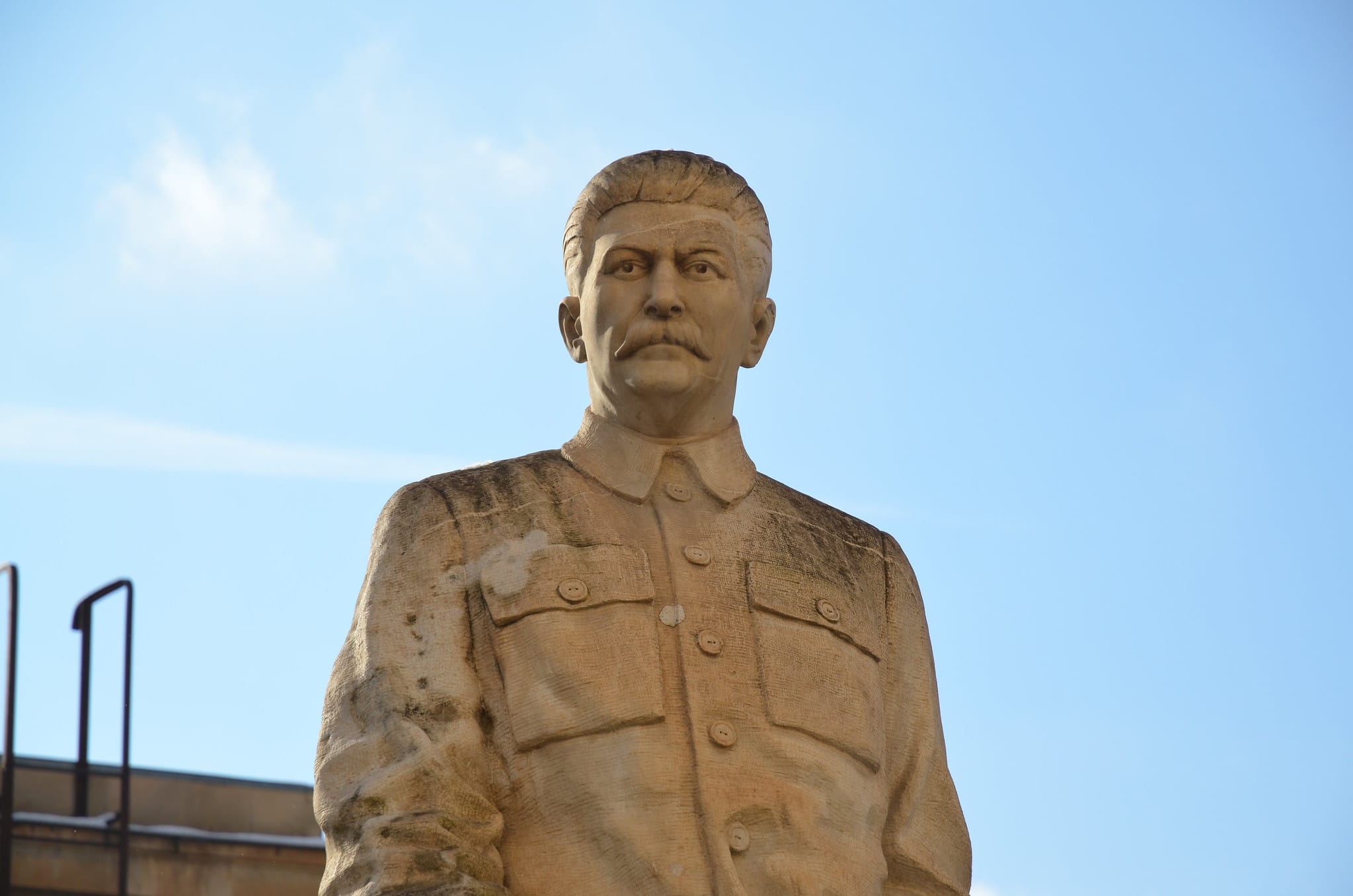
Stalin Museum in Gori, Georgia
Gori, located a ninety-minute drive from Tbilisi, may not catch a visitor’s eye at first. However, the town is forever cemented in history as the birthplace of one of the most well-known leaders in world history: Joseph Stalin. Born Ioseb Jughashvili, Stalin spent the first sixteen years of his life in Gori. While Gori hosts […]
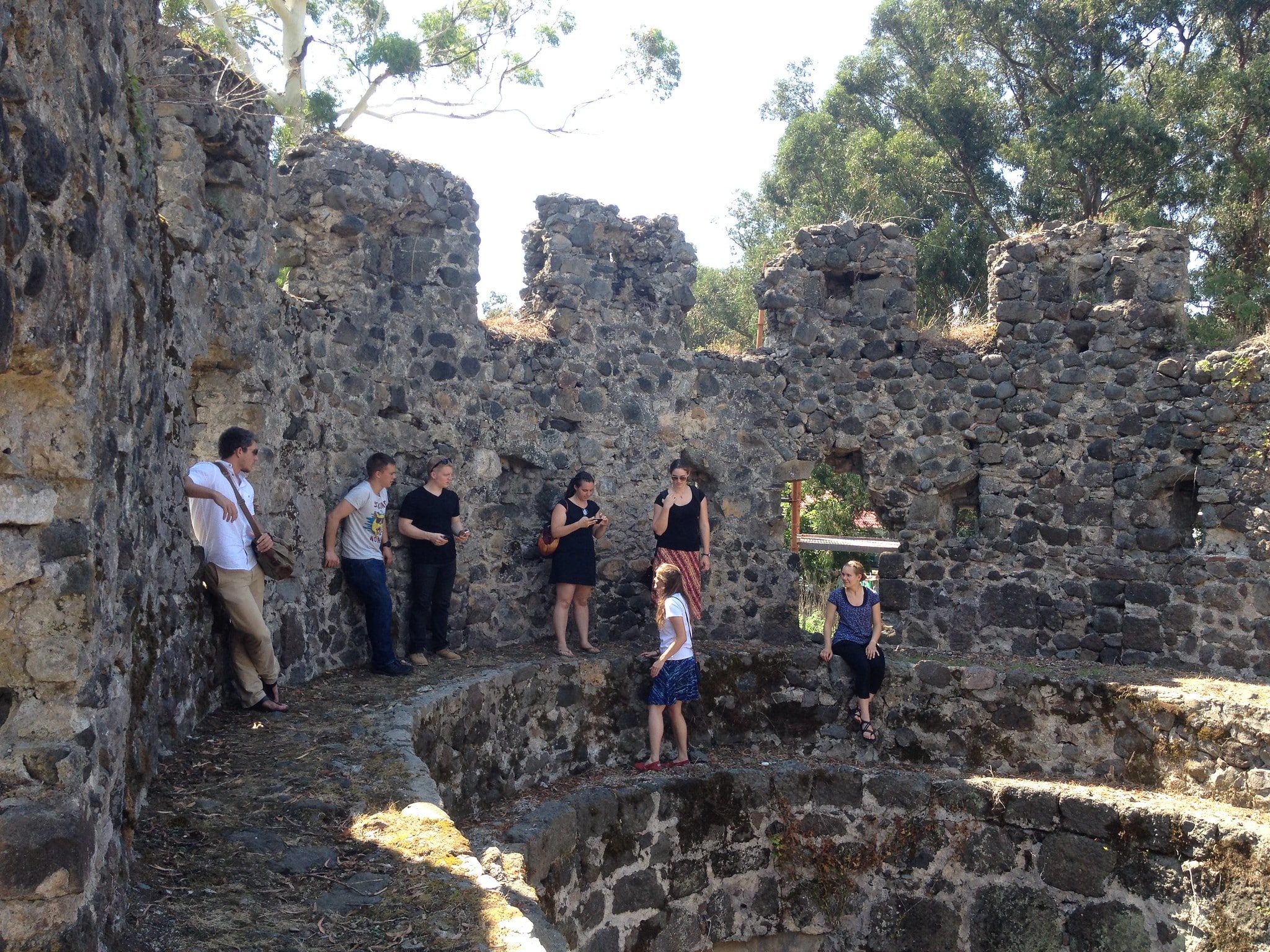
Fortress of Gonio: Georgia’s Roman Heritage
The Fortress of Gonio, located in Adjara, Georgia, is an ancient Roman fortification dating back to the 1st century AD. A strategic point along the Black Sea coast, over the centuries, it was expanded and fortified by the Byzantines and Ottomans. Today, the well-preserved remains of Gonio Fortress stand as an important cultural and archaeological […]
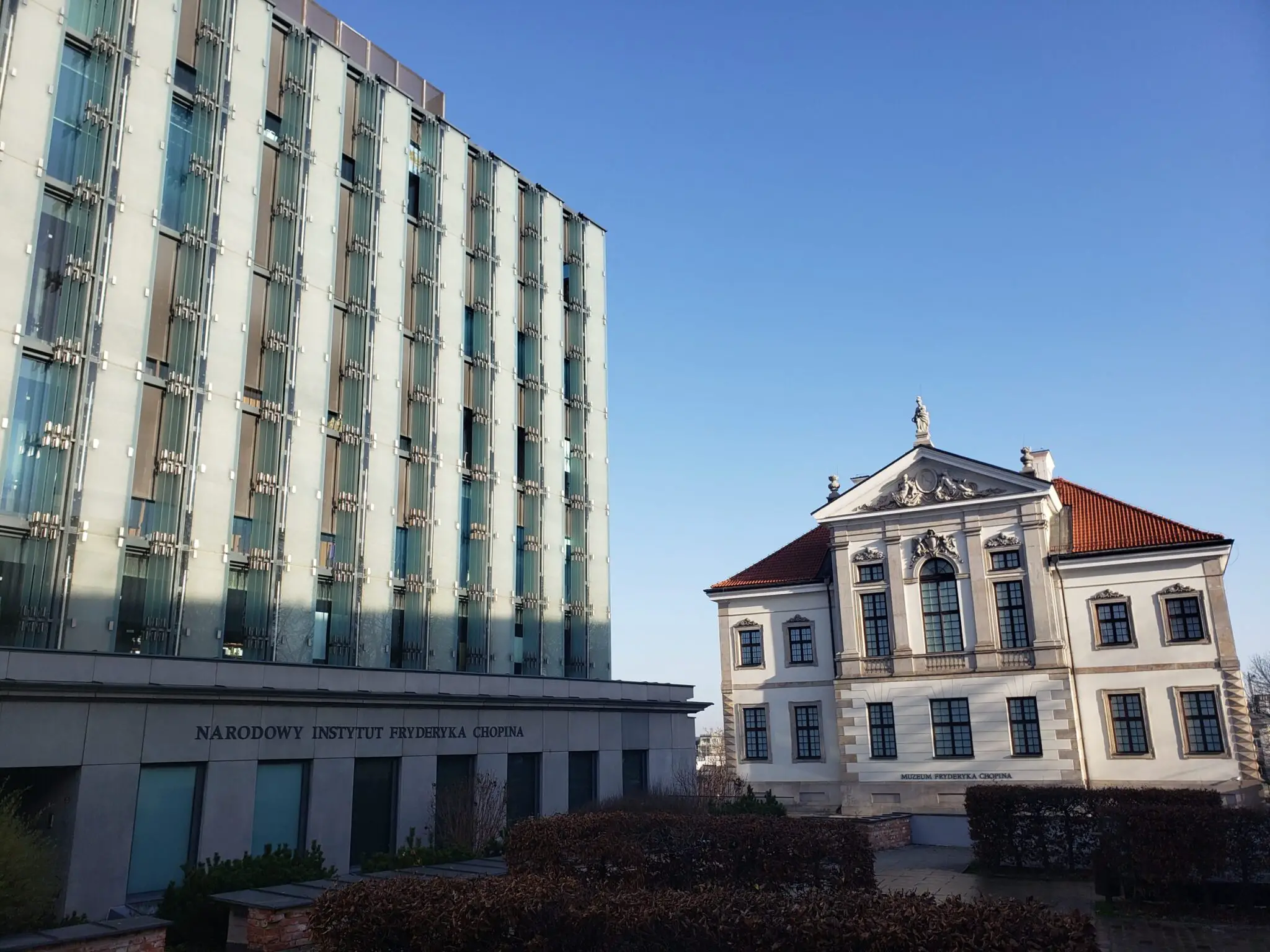
Chopin Museum and Rememberance, Warsaw
In Warsaw, large, elegant, and beautiful willow trees grace many of the parks within the city. These are the same willow trees that inspired many of the outstanding musical pieces of prodigy composer and native Pole, Frédéric Chopin. Signs of Chopin’s legacy, like the willows that inspired him, can also be seen across the city. […]

The Amir Timur Museum in Tashkent
The Amir Timur Museum, also known as The State Museum of Timurids History, stands proud at the center of Tashkent. Built in 1996 to mark the 660th anniversary of Amir Timur’s birth, the museum celebrates what it sees as a glorious history and places modern Uzbekistan as the direct descendant of that history. A visit […]



